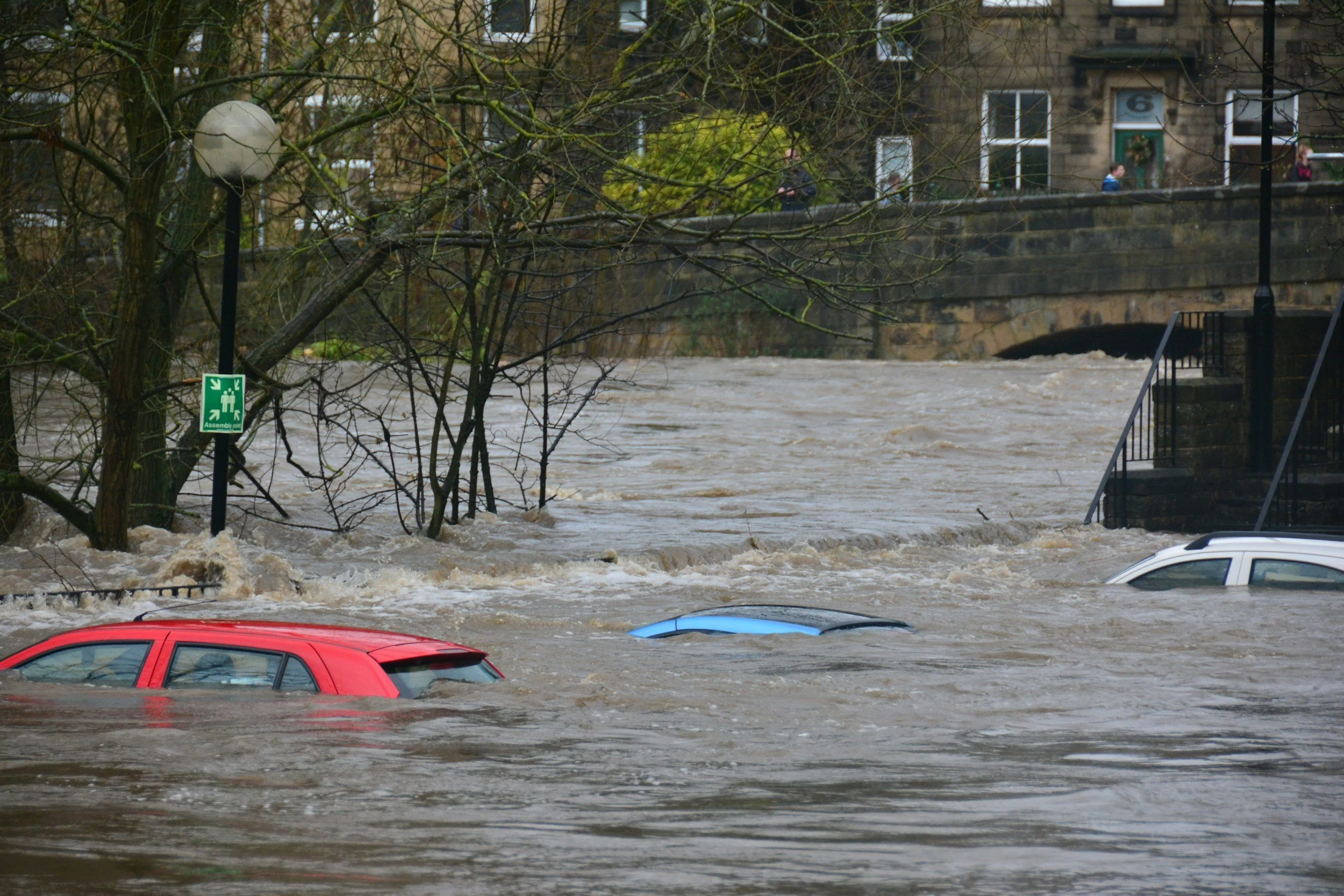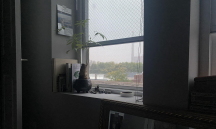By Lily O’Leary
I like to sleep with my windows open, which unfortunately means that if there’s a storm at night, I wake up to puddles by my bedside. The breeze and fresh air feel worth the occasional water damage, but this summer, the storms in Chicago reached an intensity that made me reconsider my preference for a ventilated sleep environment.
View from my bedroom window on a semi-rainy day. Photo credits: Lily O’Leary
You may have noticed the same thing–Chicago has been hit with particularly severe storms this season: pelting rain, flash flood alerts, bright lightning flashes followed by gutting bellows of thunder. Whenever weather like this blows through, I’m reminded that the risks of climate change are not as distant or abstract as we can brush them off to be.
And unfortunately, these downpours and frightening storms are consistent with climate change–not isolated bouts of dramatic weather, but warning signs we should pay attention to. A warming climate means hotter air, which holds more water vapor, and this increased moisture results in heavier rainfall (“Warming”). Hotter weather also slows high-altitude winds, causing storms to linger over one area instead of moving quickly along. That combination of heavier rainfall and slow movement fuels flash floods (“Warming”).
These floods are deeply damaging to city infrastructure and threaten public health and safety. When river levels rise and Chicago’s canal system exceeds capacity, sewers overflow, redirecting polluted water into Lake Michigan (“Climate”). This is especially troubling because the lake is not only ahub for recreation–like boating out of 31st StreetHarbor or polar plunges off Concrete Beach–it’s thecity’s primary source of drinking water (“Climate”).
As weather patterns worsen, the need for more flood-resilient infrastructure becomes urgent. But a new obstacle is compounding the problem: President Trump’s budget cuts to the National Weather Service (NWS), an already-understaffed federal agency, has led the administration to lose another 600 staff members, about 1 in every 7 employees according to The Washington Post. With staff stretched thin, forecasting becomes harder and weather monitoring less reliable (Natanson).
Though NWS officials maintain that they can provide timely forecasts, many worry the agency is testing its limits (Natanson). Certain forecasting strategies, like launching weather balloons, have already been scaled back, and an increasing number of offices are cutting community outreach programs that teach people how to respond to severe weather (Natanson).
Here in Chicago, where above-average precipitation in warmer seasons has been the norm since the 90s and extreme rainfall events are on the rise, the diminishing capacity of the NWS poses a serious risk to public safety (“Climate”). The consequences of being unprepared for severe weather extend far beyond the inconvenience of mopping up a puddle from a left-open window–they include damaged infrastructure, polluted waterways, and contaminated drinking water (“Climate”).
As we face a future with more intense storms, it’s not enough to shut a bedroom window–we must also advocate for the public services and institutions, like the NWS, that protect our safety and our city's future.
Sources
“Climate Change Connections: Illinois (Chicago’s Waterway System).” EPA, Environmental Protection Agency, 11 Aug. 2025,
www.epa.gov/climateimpacts/climate-change-connec tions-illinois-chicagos-waterway-system.
Natanson, Hannah, and Brady Dennis. “National Weather Service at ‘breaking point’ as Storm Approaches.” The Washington Post, 27 Sept. 2025, https://www.washingtonpost.com/politics/2025/09/27 /national-weather-service-staffing-crisis/.
“A Warming Earth Is Also a Wetter Earth.” National Centers for Environmental Information (NCEI), 15 Nov. 2024,
www.ncei.noaa.gov/news/warming-earth-also-wetter earth.



